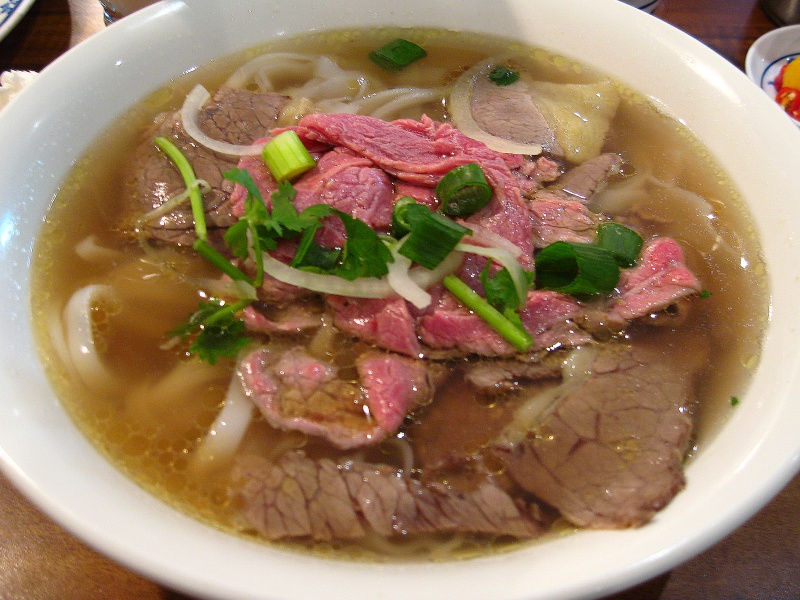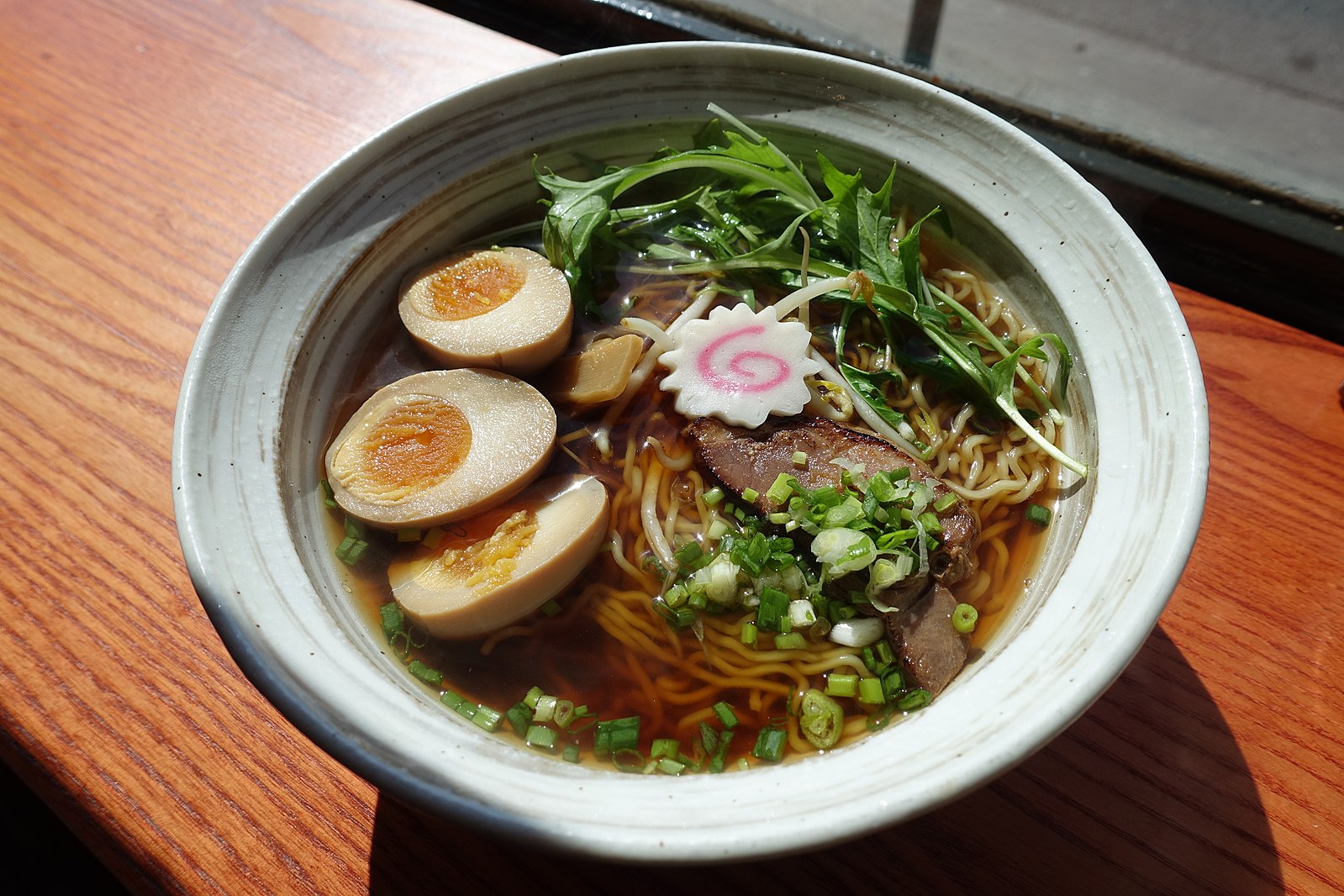Difference Between Pho and Ramen
For an outsider who’s never had the privilege to indulge into the warmth of these two popular Asian noodle soup dishes, pho and ramen may seem similar on the outside and it’s easy to see why. There is often some confusion surrounding the difference between these two popular soup dishes from Asia, which gained immense popularity in the West in the recent years. There is something about both pho and ramen that made them so popular even outside Asia, but unless you try them, you may not be able to tell the differences between the two. We break down the differences between the two to help you understand what makes each of them unique and authentic.

What is Pho?
Pho, pronounced “fuh,” is a traditional Vietnamese noodle soup made with broth, noodles, beef and a lot of other good stuff accompanied with some mix-and-match toppings. Pho is probably the most widely known Vietnamese dish which was believed to have born in Northern Vietnam during the mid-1880s and then it made its way south. The origins of Pho can be traced back to the cuisines of China and France, but it wasn’t until the end of the 19th century, that it became popularized. Some believe pho is derived from the French dish “pot au feu” – a French beef stew cooked in a heavy pot – that Vietnamese cooks prepared for their employers. Still many argue that the noodles and flavorings are Chinese. Regardless of its origin, pho is a flavorful and aromatic soup made from beef stock or chicken and topped with a handful of chopped herbs and chives. Although, pho is regarded as the National dish of Vietnam, it is equally loved as a popular breakfast cereal in the United States.

What is Ramen?
It was once the iconic component of Japanese national food culture, but Ramen is now among some of the most popular dishes in America. Raman was once considered as the national food of Japan and while its origin stories place the birth of the popular Japanese noodle soup between 17th and 20th centuries, it was believed to be originated in China and made its way to Japan. What uses to be a cheap instant snack is now rapidly gaining popularity among foodies worldwide. Sushi may be the one most closely associated with the nation outside Japan, but within the country, Ramen takes the center stage. However, it wasn’t until the 1990s, that Ramen sprang to popularity in both China and Japan. While there are as many variants of ramen as there are ramen chefs, it is actually a simple food that is a good combination of wheat noodles, rich bone broth and the flavoring sauce. Ramen is more than the instant packages you can get at any grocery store and heat up in a microwave; the authentic noodle soup can take hours to make.
Difference between Pho and Ramen
Origin of Pho and Ramen
– Pho (pronounced “fuh”) was originated in northern Vietnam and made its way south. Hanoi, the capital city of Vietnam, is attributed to being the birthplace of pho, but it was not invented here. Another theory is that pho can be traced back to the Chinese and French influences, but it was popularized around the end of the 19th century.
The first iterations of ramen reportedly came to Japan from China in the early 19th century, when the Chinese immigrants brought the Chinese wheat noodles called Lamian to Japan. Early version were wheat noodles, which they referred to as “Chinese Soba,” which translates to China and noodle dish. However, the Chinese Soba acquired the status of a national dish in Japan under the name ramen.
Ingredients found in Pho and Ramen
– While both the noodle soups are popular Asian dishes made from noodles and broth, that’s about where the similarity ends. Pho is a flavorful and aromatic soup made from beef stock or chicken and topped with a handful of chopped herbs and chives. The broth is where most of the aromatic flavors come from, and the added textures of bean sprouts, chili peppers, basil, onion, star anise, and lime juice make it unique in flavor. Most importantly, pho is made with rice noodles.
Ramen, on the other hand, are thin, wheat-based noodles made from wheat flour, salt, water, and kansui (baking soda-infused water). Like pho, ramen’s flavor depends on its broth preparation, but the broth is generally made from chicken and pork bones, anchovies, dried bonito flakes, ginger, garlic and vegetables. The ramen broth can have a few variants, such as Miso, Tonkotsu, Shoyu and Shio.
Toppings for Pho and Ramen
– Toppings play a very important role in adding that extra flavor and touch to both the noodle soup dishes, but they also use very different toppings. Pho is often garnished with sliced meat accompanied with lime, Thai basil, and pepper, and bean sprouts atop the pho bowl. Other toppings include jalapenos, cilantro, mint leaves, hot sauce, sesame seeds, fresh herbs and vegetables.
The concentrated seasoning sauce, usually available in three flavors – salt (shio), fermented soybean paste (miso), or soy sauce (shoyu) – provides a distinct flavor for the soup base. Eggs are probably the most loved ramen toppings, especially soft-boiled eggs make a delectable addition to a bowl of ramen. Other common toppings include slices of pork, dried seaweed, fish cakes, scallions, fermented rep pepper paste, bean sprouts, spinach, tamarind, tomatoes, mushrooms, mustard greens, menma, corn, butter, etc.
Pho vs. Ramen: Comparison Chart

Summary of Pho vs. Ramen
Both pho and ramen are popular Asian noodle soup dishes that have managed to gain immense popularity in the West because of their different variations and aromatic flavors and savory taste. Pho is a Vietnamese dish made with rice noodles, herbal broth and a lot of aromatic seasonings, whereas ramen is a popular Japanese noodle soup that is among some of the most popular dishes in America. The broth is arguably the most important element in both pho and ramen, but it’s the process of making a unique, flavorful broth from a basic stock accompanied by the addition of appropriate seasonings and flavors, is what makes the two so distinct and unique.
- Difference Between Caucus and Primary - June 18, 2024
- Difference Between PPO and POS - May 30, 2024
- Difference Between RFID and NFC - May 28, 2024
Search DifferenceBetween.net :
Leave a Response
References :
[0]Solt, George. The Untold History of Ramen: How Political Crisis in Japan Spawned a Global Food Craze. Berkeley, California: University of California Press, 2014. Print
[1]The World's Best Bowl Food: Where to find it and how to make it. Kindle ed., Lonely Planet, 2018.
[2]Corum, Ann Kondo. Ethnic Foods of Hawaiʻi. Bess Press, 2000. Google Books, books.google.co.in/books?id=RI9BPVDH8HsC&newbks=1&newbks_redir=0&source=gbs_navlinks_s.
[3]Cwiertka, Katarzyna Joanna. Modern Japanese Cuisine: Food, Power and National Identity. London, England: Reaktion Books, 2006. Print
[4]Le, Helen. Simply Pho: A Complete Course in Preparing Authentic Vietnamese Meals at Home. New York, United States: Race Point Publishing, 2017. Print
[5]Benton, Nell. Ramen Fusion Cookbook: 40 Traditional Recipes and Modern Makeovers of the Classic Japanese Broth Soup. Penguin, 2015. Google Books, books.google.co.in/books?id=ZeAkCgAAQBAJ&newbks=1&newbks_redir=0&dq=ramen+toppings&source=gbs_navlinks_s.
[6]Image credit: https://commons.wikimedia.org/wiki/File:Shoyu_Ramen.jpg
[7]Image credit: https://commons.wikimedia.org/wiki/File:Pho-Beef-Noodles-2008.jpg
